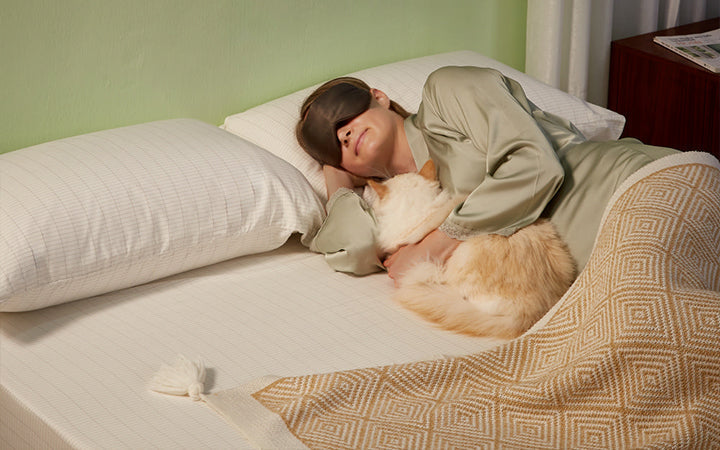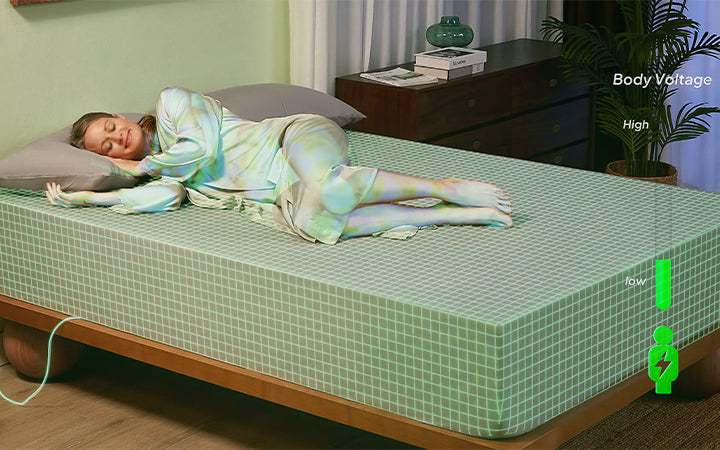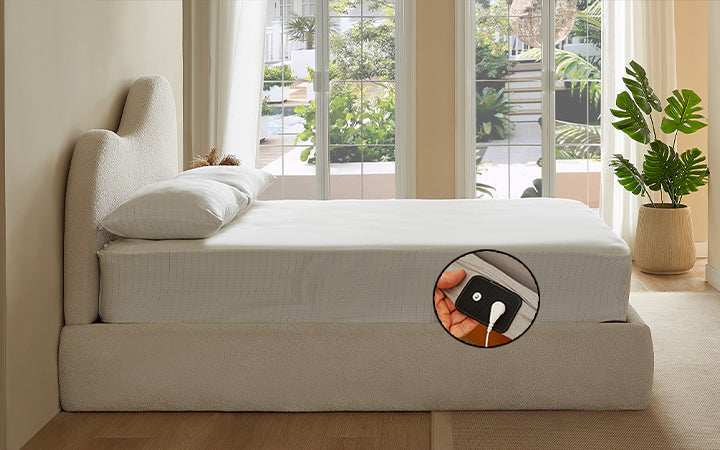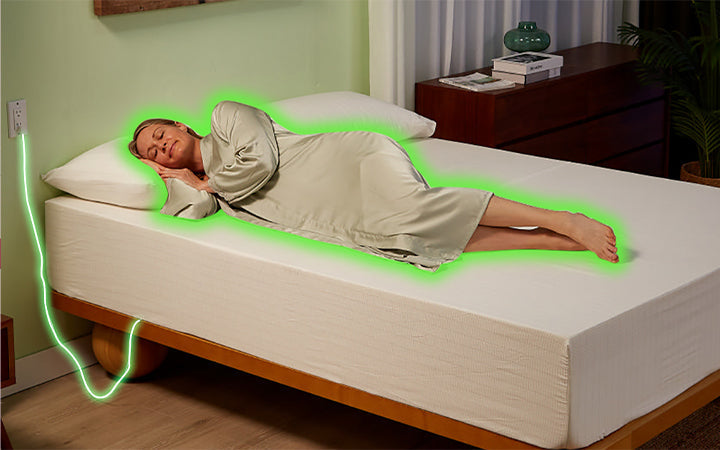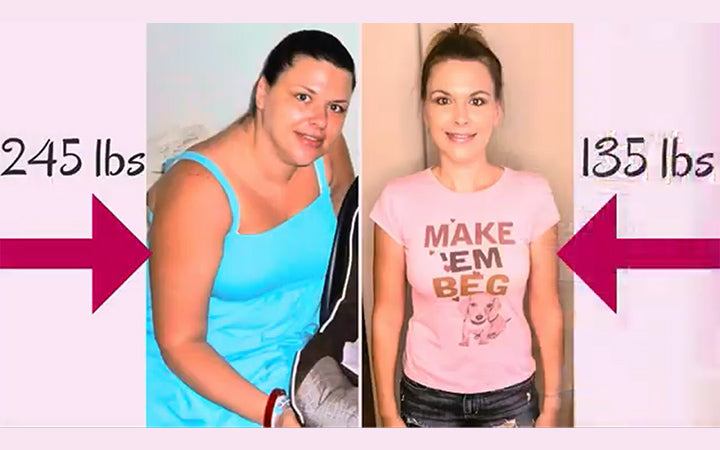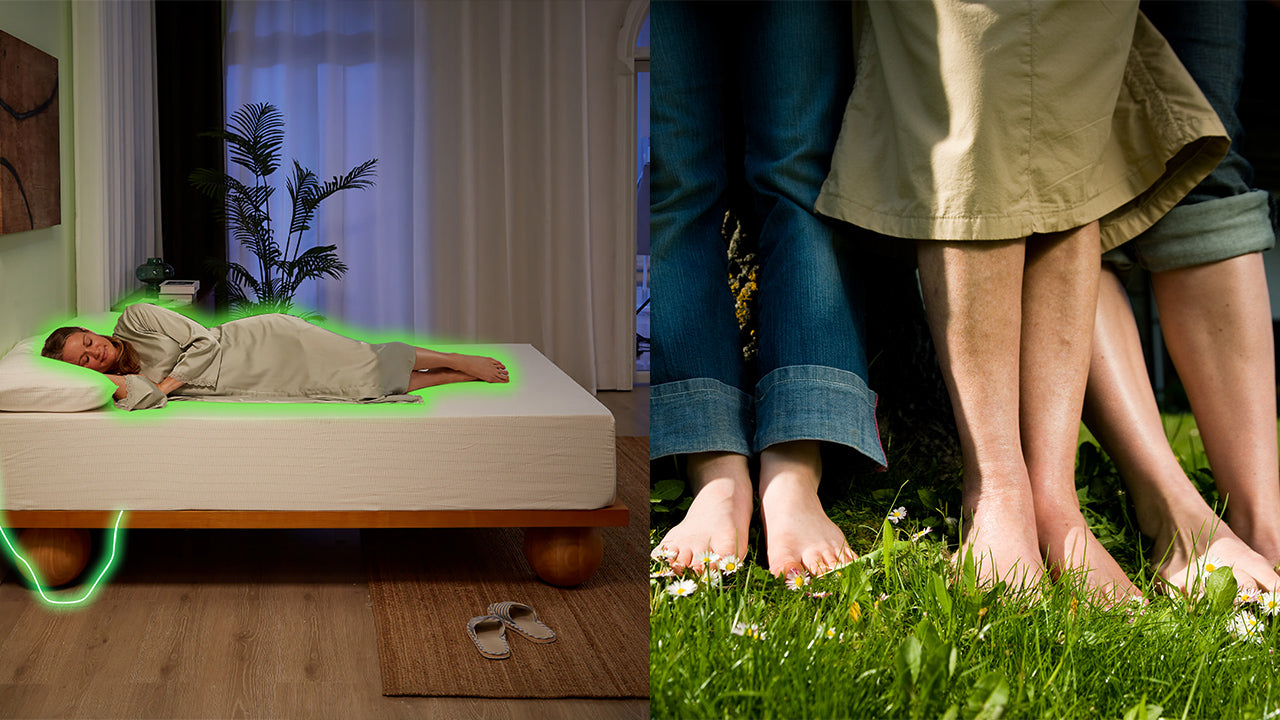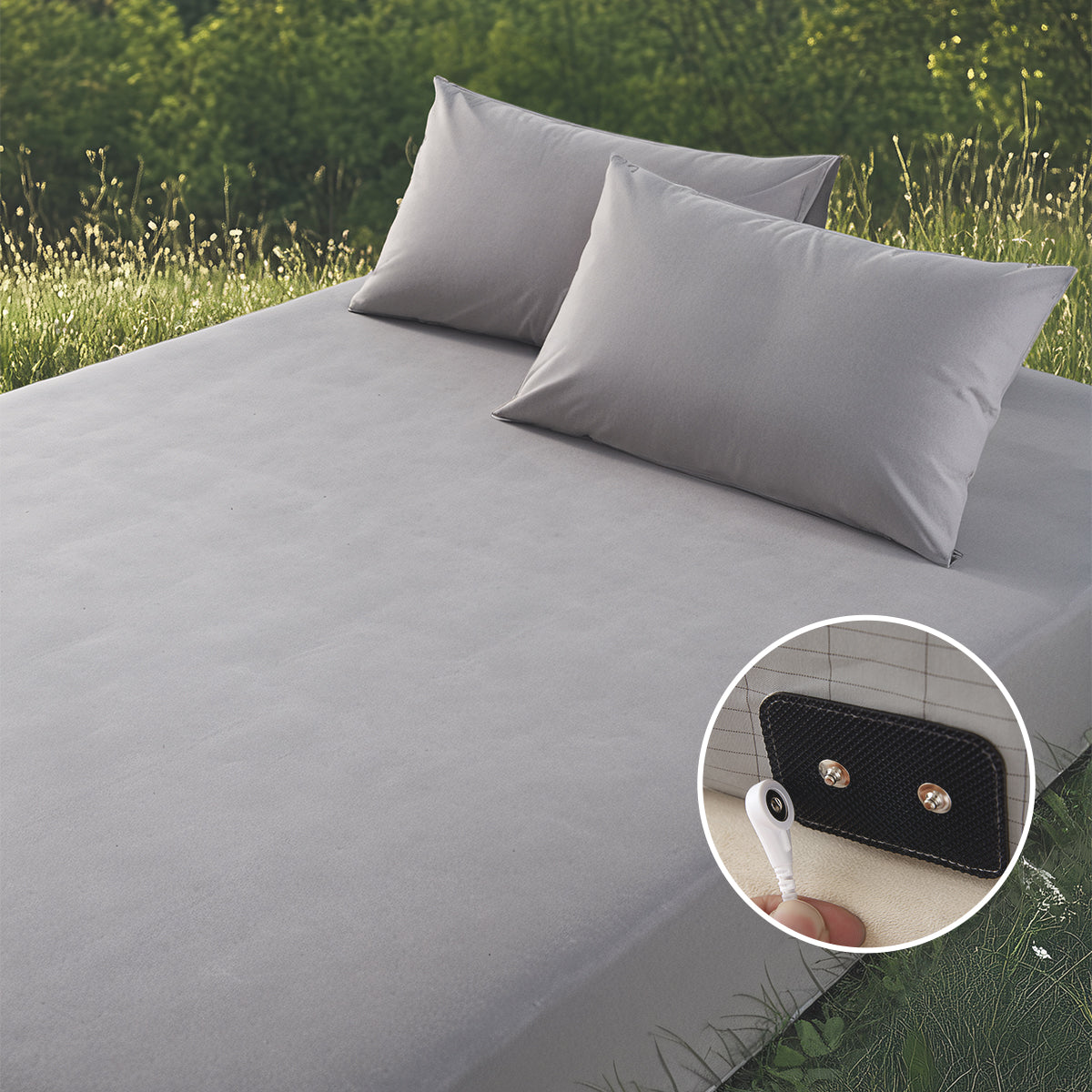Grounding Sheets vs. Grounding Mats vs. Grounding Fitted Sheets: What's the Differences?
If you've heard of grounding or earthing, you may be interested in the different things you can use to connect with the energy of the Earth inside your home. There are many choices for grounding sheets, mats, and fitting sheets. What's the difference between them? There are pros and cons to each of these goods that are broken down in this guide to help you choose the best one for your needs.
What is Grounding?
Before we compare products, let's quickly explain what grounding is. Grounding means joining your body to the natural electrical energy of the Earth. Natural grounding is simply going barefoot on grass or sand. It's thought by many that this link helps keep our bodies' electrical systems in balance. For the same benefits you get outside, grounding items act as conductors that bring the Earth's energy into your home from a grounded outlet or grounding rod. The purpose of these items is to provide the same impact as hitting the ground, but more easily accessible.

Grounding Sheets: The Flat Sheet Approach
Description and Material: A normal grounding sheet looks like a normal bed sheet with a flat top. A large piece of fabric that is usually made of soft natural fibers like cotton and threads that carry electricity. The fabric is sewn with these threads, which are usually made of silver or carbon and let the Earth's energy run through them.
Placement and Use: This sheet is meant to go on top of your current fitting sheet. It's long enough to cover one side of the bed or the space where your legs or body will rest. Your skin needs to be directly on the grounding sheet for it to work. Any other bedding or thick clothes will block the connection. The sheet is linked to a grounding cord by a snap-on wire. The grounding cord then plugs into the ground port of a properly grounded wall outlet or an external grounding rod.
Advantages: One of the best things about it is that it covers a lot of bed surface area, so you can touch your skin a lot while you sleep. Most of the time, these sheets are easy to put on the bed and feel like regular bed sheets.
Disadvantages: The biggest problem is that it is not stable. Since they lie flat on top of another sheet, they are easy to move around or get tangled while you sleep. During the night, this movement could break your grounding link. It might be difficult to have to adjust or re-tuck the sheet a lot of times. They don't always look as nice as a fitted sheet that's made to stay in place on the mattress, according to some people.

Grounding Mats: Versatility Beyond the Bed
Description and Material: Unlike sheets, grounding mats are typically not made of fabric. They're smaller pads made from durable conductive materials or regular materials with a conductive top layer. Common materials include conductive polyurethane (PU) leatherette, rubber, vinyl, or carbon-infused composites. These mats are designed to be functional and durable rather than to match your bedding.
Placement and Use: The best thing about grounding mats is their versatility. They're not just for bedroom use. You can place a mat on the floor under your bare feet while working at a desk or relaxing in a chair. You can put it on your desk for contact with your wrists or hands while typing or using a mouse. You can even sit on it in a chair. While you can use mats on a bed—often at the foot for your feet or under your torso—your skin still needs to touch the mat directly for it to work well. Some people put the mat under their fitted sheet, but this only works if the sheet is very thin and slightly damp (from sweat). Like grounding sheets, mats connect with a cord to a grounded outlet or rod.
Advantages: The main benefits are portability and versatility. You can easily move a mat from your office to your living room to your bedroom. The non-fabric surfaces are generally more durable and much easier to clean—usually just needing a quick wipe-down. Mats are great for grounding specific body parts, like your feet while working.
Disadvantages: Compared to sheets, mats cover a much smaller area. This might not be enough if you want more of your body grounded, especially during sleep. While the materials are durable, they might not feel as comfortable to sleep directly on for long periods compared to soft cotton sheets. A mat placed on a bed might also look out of place with your bedding. Trying to use a mat under a regular sheet depends on moisture to conduct energy, which isn't always reliable.

Grounding Fitted Sheets: Secure and Integrated Bedding
Description and Material: This product combines a grounding sheet's functionality with the design of a regular fitted sheet. It has elastic corners that wrap around your mattress to keep it in place. Like flat grounding sheets, these are made from cotton or cotton-polyester blends with conductive silver or carbon threads woven throughout.
Placement and Use: A grounding fitted sheet completely replaces your regular bottom sheet. It stretches over your mattress just like any standard fitted sheet, providing a stable grounding surface. This design allows your whole body to stay in contact with the grounding surface all night, no matter how much you move around, as long as your skin touches the sheet directly. The connection cord typically snaps onto a point near one of the edges or corners and connects to the grounded outlet or rod.
Advantages: The biggest benefit is stability. Once it's on your mattress, it stays securely in place, ensuring continuous skin contact throughout the night, even if you're a restless sleeper. It blends perfectly with your other bedding, looking and feeling just like a normal high-quality fitted sheet. The full mattress coverage gives you a large grounding surface.
Disadvantages: Unlike mats, fitted sheets aren't portable - they're designed specifically for bed use. They need regular washing like any bedding, and you need to follow the manufacturer's care instructions carefully (avoiding bleach, fabric softeners, and certain detergents) to maintain the conductivity of the metal or carbon threads. Because of their design and materials, grounding fitted sheets often cost more than flat grounding sheets or basic mats.

Key Differences Between Grounding Products: Grounding Sheets vs. Grounding Mats vs. Grounding Fitted Sheets
After exploring each grounding product in detail, you might still be wondering which one best suits your needs. To make this clearer, here's a side-by-side comparison of all the key features we've discussed:
| Feature | Flat Grounding Sheet | Grounding Mat | Grounding Fitted Sheet |
|---|---|---|---|
| Form | Flat textile sheet | Smaller pad, usually non-textile | Mattress-conforming textile with elastic corners |
| Primary Location | Bed | Multi-purpose: desk, floor, chair, bed | Bed |
| Bed Placement | On top of bottom sheet | Variable - under sheet, at foot, etc. | Replaces bottom sheet |
| Sleep Stability | Prone to shifting | Generally stable but covers smaller area | Excellent stability |
| Coverage | Large, but depends on placement | Smaller, targeted | Full mattress area |
| Portability | Moderate | High | Low |
| Upkeep | Machine washable with care | Typically wipe-clean | Machine washable with care |
As you can see from this comparison, each product has distinct advantages depending on how and where you plan to use it. Your specific needs will determine which features are most important for your situation.
Essential Considerations for Any Grounding Product
No matter which type of grounding product you choose, follow these essential tips:
- Always Verify Your Ground Source: Use an outlet tester to confirm your electrical outlet is properly grounded before connecting any grounding product. The effectiveness of your grounding experience depends entirely on a proper ground connection.
- Look for Built-in Safety Features: Purchase products with safety features in their grounding cords, typically a built-in resistor (around 100k ohms), to protect against rare electrical issues.
- Ensure Direct Skin Contact: Make sure your bare skin touches the conductive surface directly. Remember that clothing or other materials between your skin and the grounding product will prevent proper grounding.
- Follow Manufacturer's Care Instructions: Clean and maintain your product exactly as directed. Avoid using bleach, fabric softeners, or harsh detergents on grounding sheets, as these can damage the conductive fibers.
- Test Your Products Regularly: Periodically check that your grounding system is working by using a continuity tester or multimeter to verify there's a conductive path from the product to the ground source. These simple precautions maximize the effectiveness and longevity of your grounding products. Your consistent attention to these details ensures you receive the full benefits of your grounding practice.
Want a stable grounding fitted sheet with enhanced connection? GroundingTime offers durable silver fibers, 1000 points per sq ft & a uniform network, tested stable for 2+ years/100 washes. Visit our website to explore this advanced option and make your purchase.

Match the Right Grounding Product to Your Needs!
When picking out grounding items, think about where and how you'll use them most. Even though flat sheets cover a lot, they might move around while you sleep. Mats are easy to move around and can be used in many places in your home. Fitted sheets keep you in place all night, so you can sleep soundly. Think about how you sleep, where you spend your time, and how much upkeep you're willing to do. No matter what product you choose, make sure you have a good ground link and direct skin contact in order to get the benefits of grounding.
